Wednesday, October 20, 2010 - Toby Opferman

First time out riding in almost two months so I prepared the 1983 Maico 490 Spider turned Sand Spider and went through my gear. I changed the
oil, installed a new clutch cable, put air in the tires and fired the beast up to make sure there were no problems. I went through my gear to make
sure everything was complete and I added a new small vice grip to the Ogio Flight Vest. Everything was ready to ride the next morning.
I headed out around 7am to Diamond Mill OHV staging area first stopping at the Shell gas station to get fuel. The auxiliary 'number plate' gas
tank which I had yet to use was already full but I needed to fill up the main tank. Three gallons of premium mixed at 32:1 ought to be enough and
with some coffee I was on my way.
Read more » Tuesday, October 12, 2010 - Bill Dart
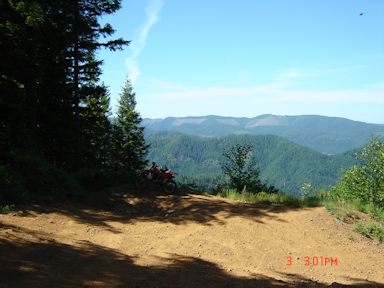
Introduction
The motorized trail system in Idaho is a national treasure. There are approximately 9,000 miles of motorized trails in Idaho that possess unparalleled beauty and technical challenge. As riders, we need to take great care to preserve the unique characteristics of the Idaho trail system so that future generations can experience and enjoy this incredible asset.
General Protocol
- a. Tread Lightly
Treading lightly means to have as little impact as possible. Enjoy the Idaho experience but leave little evidence that you were here. This includes, but is not limited to, having a quiet muffler on your bike so as not to offend others, having the proper bike setup in order to minimize your impact on the trails, properly disposing of your trash, being respectful of the rights of others, and generally being a good ambassador for the sport of motorcycling.
Read more »
Saturday, October 9, 2010 - Toby Opferman

The MicroCamera is an interesting little camera for about ~$20 to $30 dollars. It looks like an automatic carlock and can fit on your keychain. The entire assembly is very light and contains two functional buttons and two fake buttons. The top of the camera has a small LED that tells you the current operation mode of the camera and on the front side oppsite the key ring attachment is the camera and microphone.
The camera lens is indented into the plastic so it will not be scratching up against anything. the Microphone is a pin sized hole right next to it. The left side contains a pin sized reset button, the USB Mini port and the insert for the Micro-SDHC card. The micro SDHC card must be purchased separately and can run from $25 to $50 dollars depending on the size, class and brand.
Read more » Tuesday, September 28, 2010 - Maico International

Following countless test sessions, although realistically it's that good, only one forty minute stint was needed to realise that this just had to be standard equipment for next year, here is the first picture of the new shock absorber designed and manufactured specifically for the 2011 M.M.X.
Weighing in at approximately one and a half kilo's less that the previous Reiger shock; the all new unit features a wealth of adjustment, with 50 click settings on the rebound, 45 clicks on the high speed compression, and 25 on the low speed compression as standard. With the top end of the shock beautifully manufactured from Billet and a coated rod, it is expected that the production models will come with an anodised reservoir and will be manufactured to suit the weight of each individual rider when the customer orders his or her bike.
Read more » Friday, September 24, 2010 - Toby Opferman

Square barrels, radial fins, primary chains and Bing carburetors all come to mind when you think of the Maico Marque in the 1970s. This legacy continued into the early 1980s with the release of the 1981 Maico 490 which has become one of the most famous dirt bikes of all time. You may be surprised to know however that this engine has been evolving ever since and the grandchildren are still being manufactured today.
The 1981 490 engine is not so different than engines released by Maico in the years preceding. In fact the engine is almost part for part a late 1970s Maico 440 with a much bigger hole. Just like the 440, the cylinder utilizes a large radial fin design for air cooling which was patented by Maico in 1974 (US Patent #3,782,342). This design is definitely unique, eye catching and has never been duplicated.
Read more » Friday, September 17, 2010 - Maico International
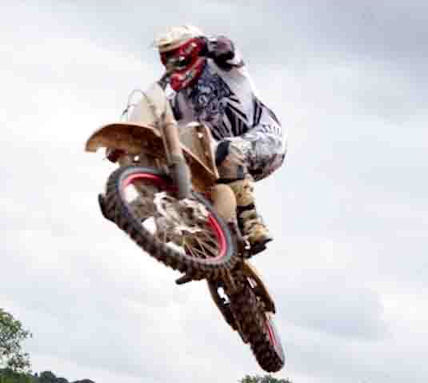
As a new era dawns in the life of Maico, rigorous testing has been carried out on a wide selection of hand made products already hotly tipped to make it onto the spec sheet for the 2011 M.M.X.
The new frame has been kept at close quarters for some time and the results have proved to be better than initially expected with a superb balance which far exceeds its dated predecessor and provides a substantial weight saving.
Read more » Thursday, July 22, 2010 - Maico International

Catching the imagination of the global motocross community earlier this year with the release of the 2010 Maico M.M.X., manufacturers, Maico International are believed to be on course to produce the first British made motocrosser for over a decade with the 2011 model, which features a new U.K manufactured engine and frame following a unique tie up with a leading engineering manufacturer for F.1.
Spending the last six months focussing on major development and working closely with the managing director of the Surrey based company who engineer and manufacture gears and various other exotic mechanical parts for many of the front running Formula One teams, Maico International will be unleashing a range of 5 new two stroke engines in, 250cc, 320cc, 380cc, 500cc and 700cc capacity, all manufactured to the highest standard along with an equally comprehensive range of high end optional upgrades which have been designed to outstrip the competition in terms of power, performance, durability and reliability.
Read more » Tuesday, July 20, 2010 - Toby Opferman
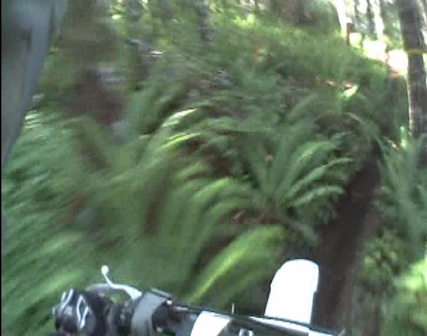
Every year the Trailsmen Motorcycle Club in Oregon organize several 'Poker Runs' in Tillamook State Forest. A 'Poker Run' is race where at the end you draw
from a bag of poker chips and if you pull a special colored chip you win a trophy. The entry fee is around $20 and everyone who finishes does recieve a
finisher's plaque. The poker run is setup with two courses, the first of which was the easy course and about ~30 miles and the second is ~40 miles and is
designated as the hard course.
I have been riding in TSF for several years now however had never participated in any events. The July 2010 Cow Country Poker run was to be my first event
as well as one of my fellow rider's, Ankur. Ankur and I were joined by another rider, Howie, who drove down for the weekend from Seattle to ride in TSF. I
brought my 1984 KTM 495MXC, Ankur rode his 1998 Kawasaki KX500 and Howie had a 2009 KTM 300. We met near Lydia camp early in the morning and rode to the
starting point.
Read more » Wednesday, May 5, 2010 - Maico International

Whilst a family bereavement has caused its fair share of emotional turmoil for Vincent Page and Lesley White over the last week their hard-core Dunlop Maxima rider Neil Berry brought smiles to their faces over the bank holiday weekend taking a very credible 4th place overall in the O.R.P.A. two day British Championship.
The annual two day event takes which place at the Horsham circuit on the Sunday moving to Northchapel for the second days racing on the Monday provided a contrasting mix in terms of weather conditions this year with rider's capabilities being seriously challenged on Sunday with pounding rain and heavy mud. Twenty miles down the road twenty four hours later and the Northchapel paddock awoke to sunshine and superb racing which eventually started throwing up dust. (Typical British weather)
Read more » Friday, March 12, 2010 - Maico International
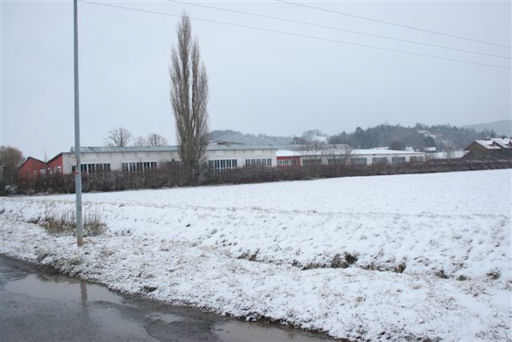
Keeping up with the frantic pace of promotion, Maico International's latest excursion took on a rather emotional tone last weekend when the new Maico M.M.X. shed a few quiet tears as its wheels touched down outside the birth place of its forefathers at Pfaffingen in Germany.
Between them bosses of the U.K. Company Vincent Page and Lesley White share an almost unrivalled passion for the marque and felt it a fitting tribute to let the company's M.M.X. race bike sample its unique background before a wheel is turned in anger this year.
Read more » Tuesday, December 16, 2008 - Toby Opferman
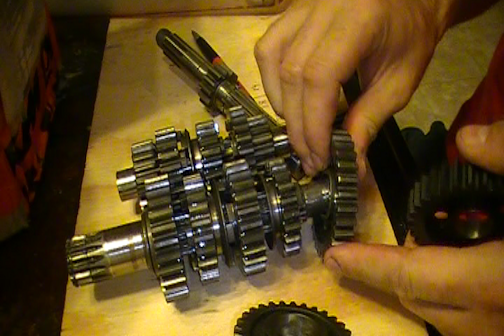
The transmission is a collection of gears that change the revolution ratio of the drive shaft which rotates the rear tire. The input to this system comes from the clutch which is rotated by the crank shaft via a gear driven system or a primary chain. This section I will provide an example of how gears work and this example will be the 1982 Maico 490 GS transmission.
The Maico 490 GS has three shafts in the transmission. The "MainShaft" which is the power input, the main shaft is attached to the clutch and rotates the transmission gears. The "Layshaft" which is the shaft that is rotated by the main shaft and finally the drive shaft which is rotated by the lay shaft. The full sequence of events that occur in the Maico 490 GS are as follows.
Read more » Sunday, November 30, 2008 - Toby Opferman
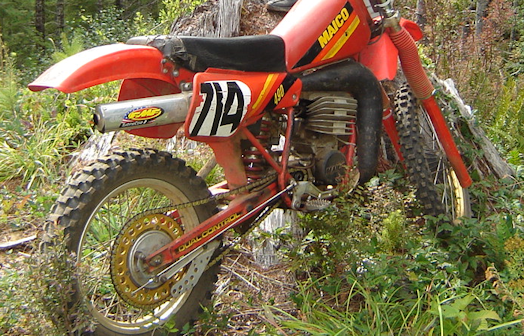
Horsepower is generally used to relate how powerful an engine is in relation to the number of horses it would take to equal it's power and is generally stated to be "33,000 foot pounds of work per minute". The horse power output of an engine varies depending on the torque and the RPM of the crankshaft. The formula for computing horse power is HP = ((Torque)*(RPM))/5252. The 5252 is a constant that represents 1 horse power, if Torque (foot pounds) * RPM is 5252 then you have 1 horse power generated as output. This constant is calculated by taking the amount of foot pounds in 1 horse power (33,000) and converting it into radians per revolution (2*PI) so 5252 = 33000/(2*PI). The general equation is "Power = (Force * Distance) / Time" which in this case force is torque in foot pounds, distance is the revolutions per minute of the crank shaft, time is calculated as 1 horsepower in a single revolution and power is in units of "horse power" or 33,000 foot pounds.
Let's take a look at severals specifications for the KTM 495's maximum power output.
Read more » Wednesday, November 26, 2008 - Toby Opferman

The speed at which your tire rotates and the size of your tires determines how fast you are able to move. You can compute the amount of ground your tire would cover in a single rotation by computing the circumference of a circle. PI * Diameter = Circumference so with a tire of 18 inches you would get 3.14 * 18 inches = 56.52 inches or 4.71 feet. This is how far your bike will move after the tire has rotated a full turn.
This can be further used to determine how many times the tire needs to rotate to cover an entire mile. There are 5,280 feet in a mile and your tire coverse 4.71 feet for every rotation so 5,280/4.71 feet = 1,121 rotations of the rear tire covers one mile. Please note that these are just estimates.
Read more » Friday, November 14, 2008 - Toby Opferman
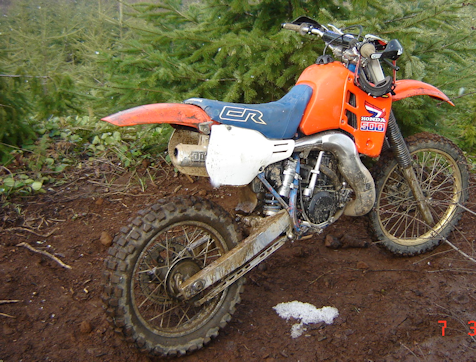
Power band is a very controversial word when talking about dirt bikes. It is commonly believed that "power band" was a new concept for some race bikes/dirt bikes and it was a common question "Does this bike have power band?". I remember one time my dad was working on a bike and one of the kids I hung around with asked him what was wrong and he said "I'm putting in a new power band, the old one was worn out". People would talk about "Power Band" as if it was a physical peice of the bike that you could replace.
I remember "Power Band" was explained one time that a normal motor goes up to about 8,000 RPM however a motor with power band (i.e. a race bike) goes up to 12,000 RPM. The "Power Band" kicks in when the motor has reached peak RPM of 8,000 and then it kicks into power band and keeps going beyond the peak RPM to 12,000 RPM. That's a power band!
Read more » Tuesday, November 11, 2008 - Toby Opferman

Changing the front and rear sprockets of a motorcycle has the affect of changing the gear ratio. That means you will either gain more power/torque but lose top end speed or you will lose top end speed but gain more power/torque. The gear ratio is computed by dividing the number of teeth on the rear sprocket by the number of teeth on the front sprocket. This means that for example a motorcycle with a 51 tooth rear sprocket and a 15 tooth front sprocket has a gear ratio of 51/15 = 3.4. You can affect this ratio by changing the number of teeth on either the front sprocket or the rear sprocket. Adding more teeth to the rear sprocket is the same affect as lowering the number of teeth on the front sprocket. The opposite is also true in that lowering the number of teeth on the rear sprocket is the same affect as adding more teeth to the front sprocket.
A 12 tooth front sprocket and a 48 tooth rear sprocket is the same as having a 60 tooth rear sprocket and a 15 tooth front sprocket. Notice the example math below (gear ratios are written as 1:ratio):
Read more »















